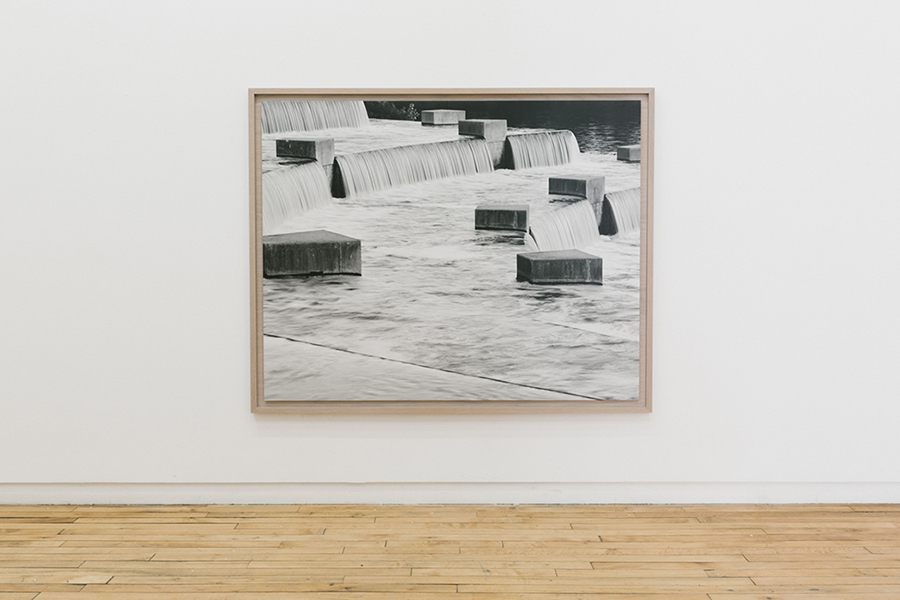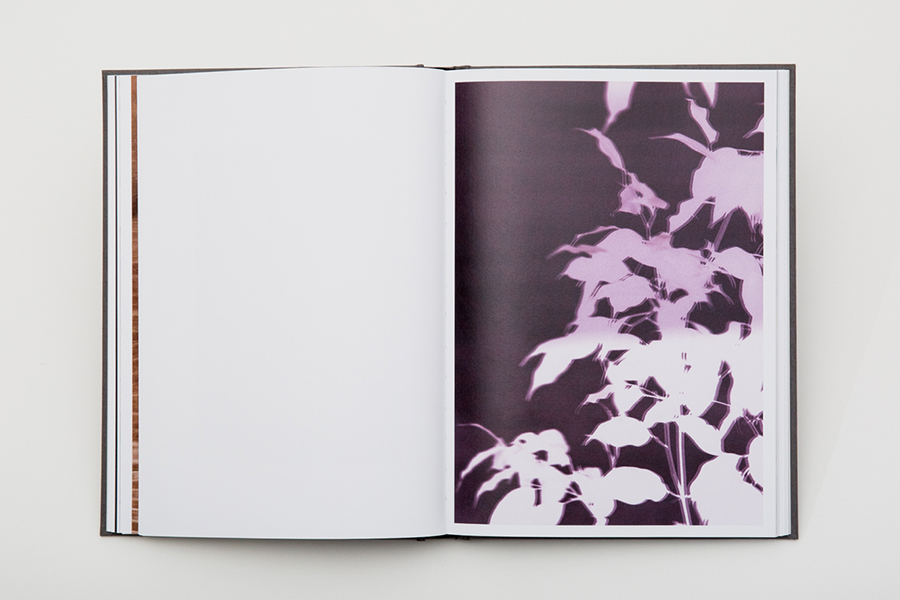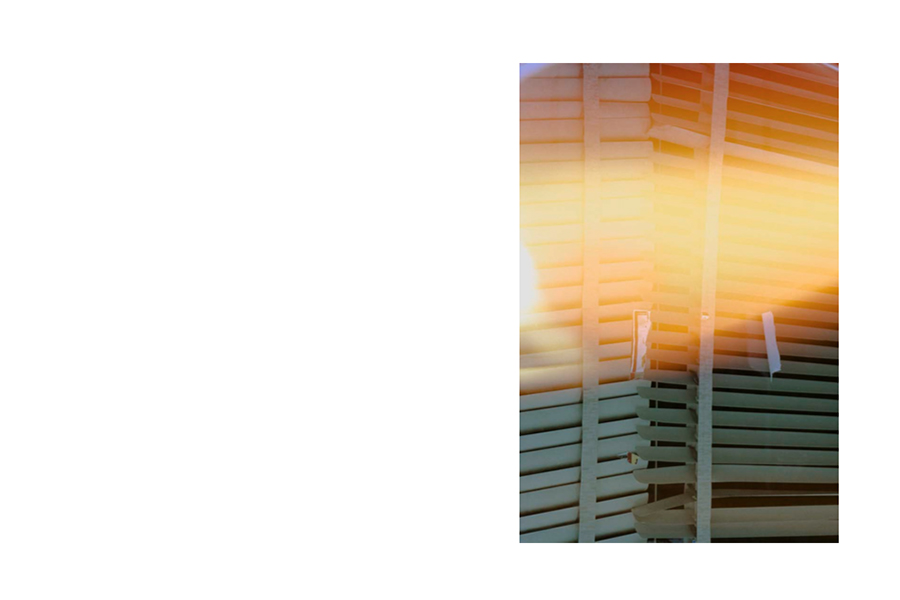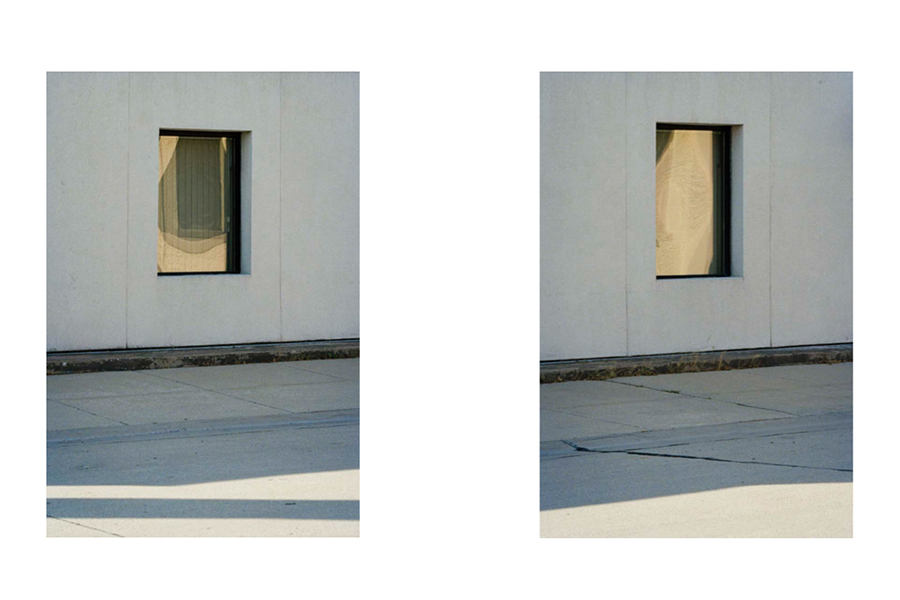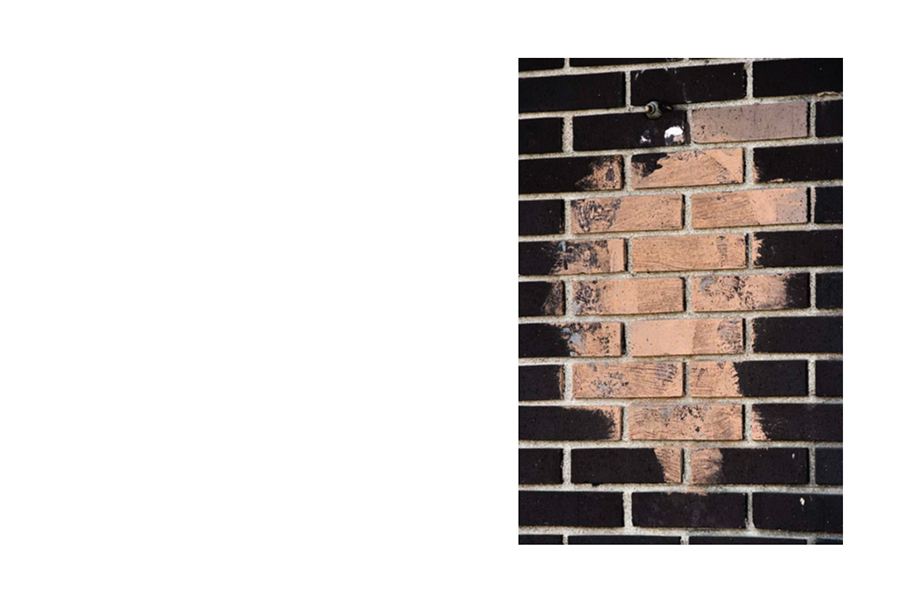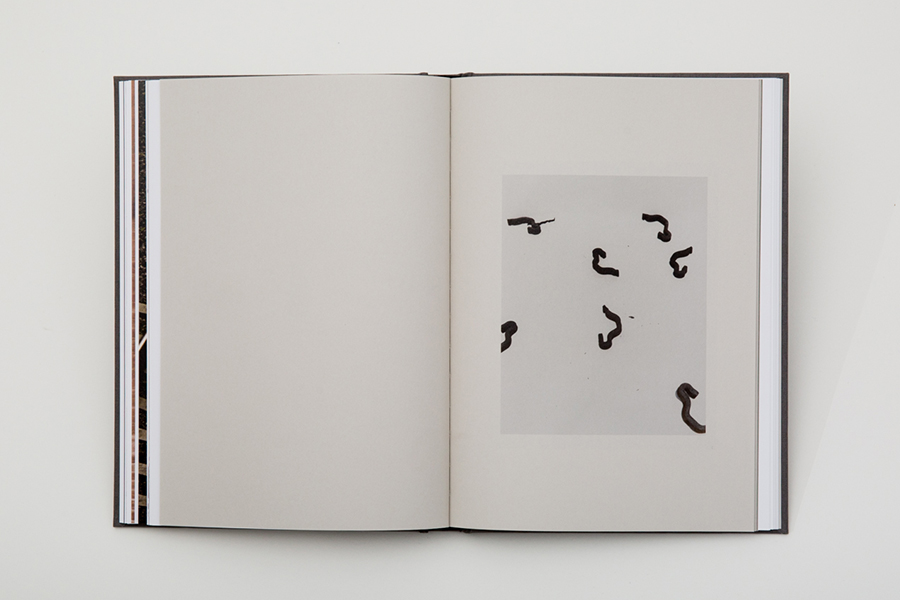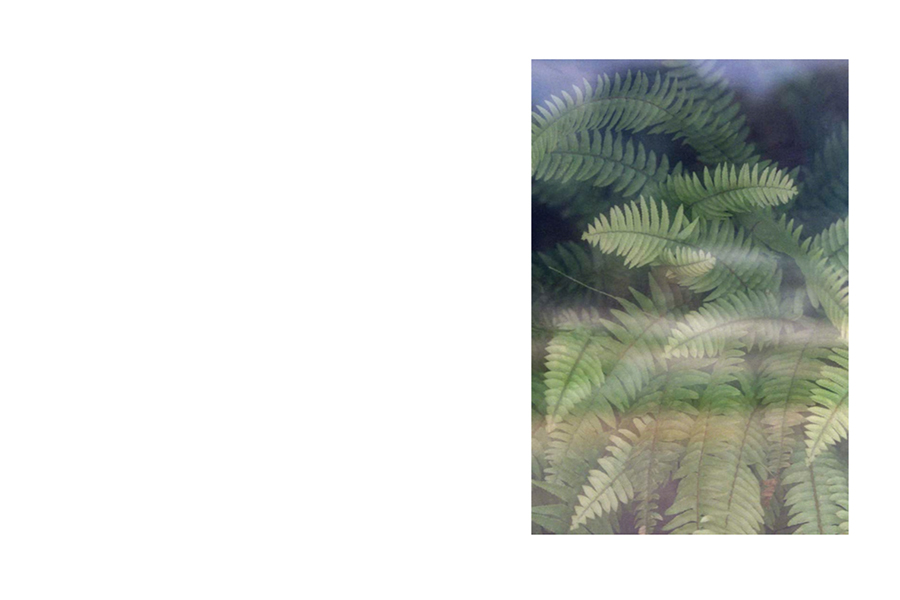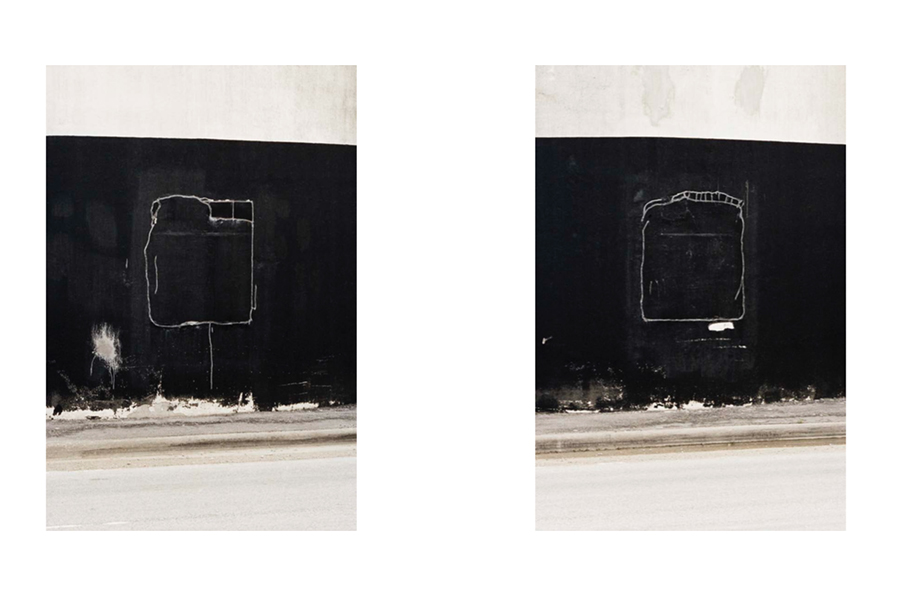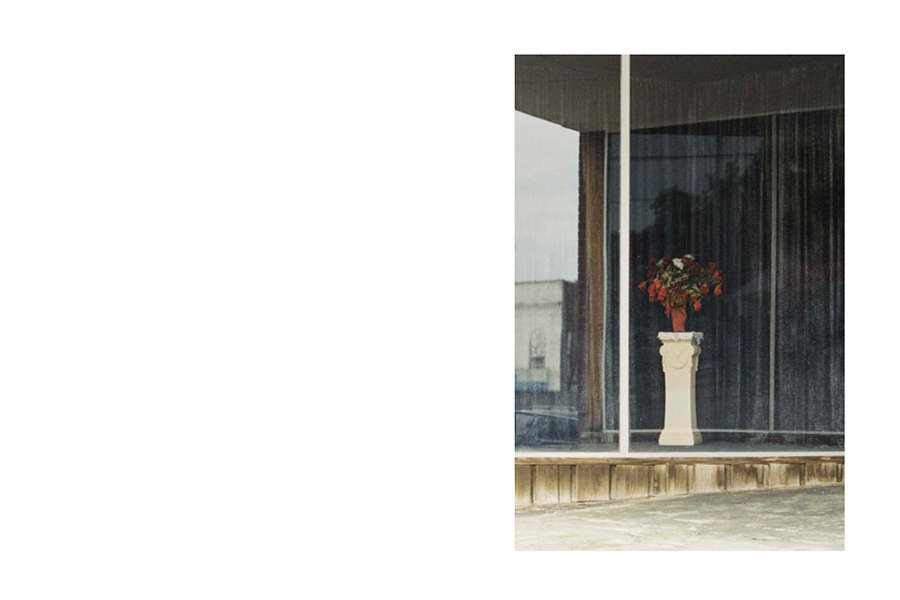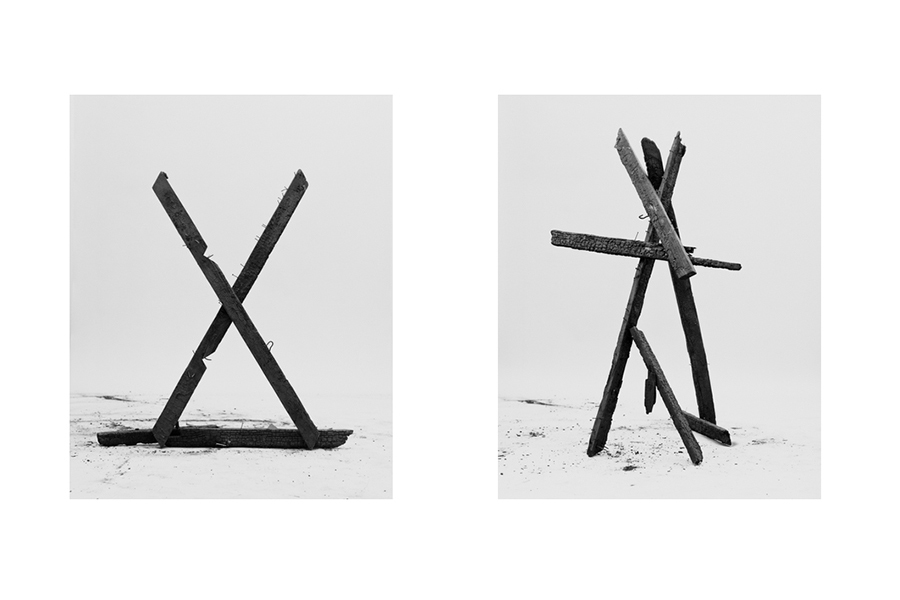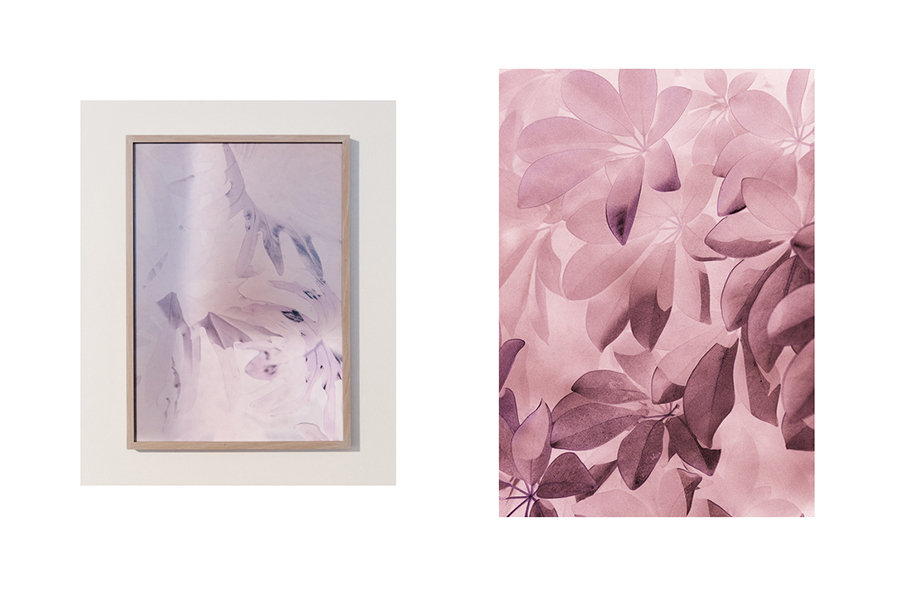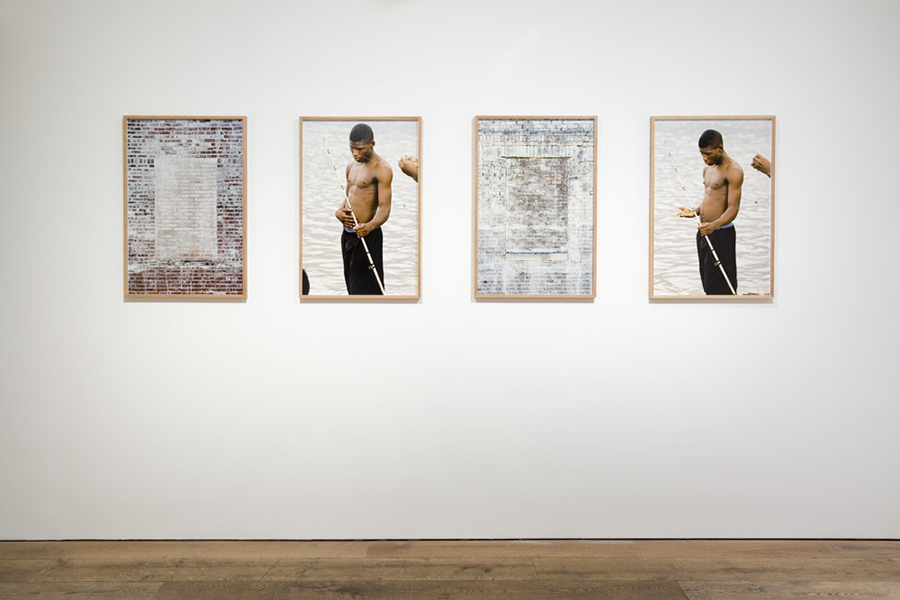Interview: Daniel Shea
Stanley Wolukau-Wanambwa: In our conversation last year about Blisner, Ill (2012), you talked about the way that coal as a fossil condenses and records a kind of history , both geological and cultural, which could be engaged photographically. It seems with this new book Blisner, IL (2014), you’ve developed that interest in the multiple symbolisms of industrial history, but you’ve shifted your axis somewhat. Now your pictures engage façades, statuary figures and a fragile fertility intimated by flora and fauna. How have things evolved in your practice and which central elements informed the development of this new work?
Daniel Shea: I’m still interested in landscape as a guide, in its ability to form a constellation of ideas, and I’m still interested in understanding the landscape of this specific town, Blisner. But I didn’t want to make the same project again. The new book zooms in, both optically and figuratively. If within the familiar pictorial tradition of large format landscape photography, images describe a place by way of relating various physical elements to one another compositionally, the photographs in the new book examine each individuated element, which for me, I suppose, is an exercise in ontology. The facades of architecture, objects in the landscape, fragments of statuary or painted figures and flora are often palimpsestic, or are photographically described that way through the use of reflections. With these I wanted to create a feedback loop, based on a suggestion of a hidden language they create. Some of these things when pictured (dryly) can be decoded, while other elements are re-energised as lost symbols (either by picturing them dryly or picturing them fantastically, allowing them to have an aura).
In general, I’m still attempting to understand, as I’ve maybe told you too many times (!), the mythologizing effects of history. An examination of a post-industrial town in Illinois, with its loss of labor, is my way of trying to learn about this.
I think one key effect of the reproduction of spreads from Blisner, Ill, and also of the imagery of murals, towers/skyscrapers and painted surfaces, was to reassert the rapidity with which seemingly big things become historic and mythical. You’re also dealing in this new book Blisner, IL, with a much broader span of historical time, stretching back to Custer and the ‘Indian’ Wars. How present was history for you in the landscape of southern Illinois, and how rapidly do you think the present is becoming the past in this fictional town of Blisner?
Before this book became primarily about these various textures and architectures, it was a book about notions of nativeness. I was thinking about the worker occupying their space on the factory floor in the same way the native populations of the region occupied the prairies as the settlers advanced and eventually settled. It was a poetic analogy, but also a dark one, we know what happened to both subjects (as individuals and as Subjects of History).
Seemingly big things, like ‘coal mining’, not only become mythical, but the way their representations are inscribed are often so anti-climatic. I’ve seen every statue of a coal miner in southern Illinois (arguably), and most of them are surrounded by lots of empty space; quiet buildings and sleepy towns. The effect of slowly walking up to them, reading the plaque, and spending a moment with their frozen gestures on a blindingly hot day in the middle of summer is uncanny. Their blank gazes are fixed on the horizon, ambiguously looking neither forwards or backwards.
But to really answer your question, it’s difficult to say. The present in this town is all about its past, but to characterise in terms of nostalgia isn’t quite sufficient. In the essay for the book, Walter Benn Michaels talks about the ‘present’ in terms of the moment it was ‘photographed’ as being “as much the picture of a process as of a moment.” It’s further complicated by the realisation that there is a delay in transmission, from when you the viewer assume I took the photographs, and when they are hitting your retina, right now, or tomorrow, or whenever the next time you look at the book. It may be overstated, but there is something nuanced there that reflects the complications of inscribing history in form.
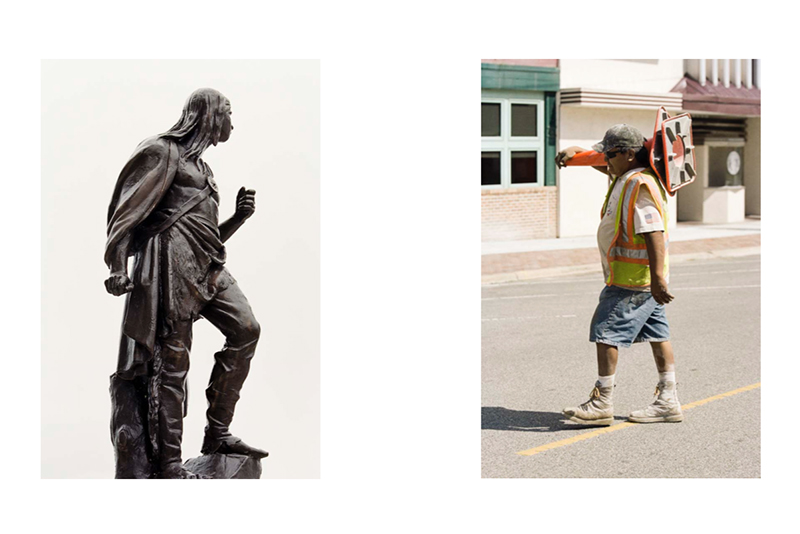
I’ve been reading Sarah James’s book Common Ground,which is about the relationship between German identity and German photography during the Cold War. She talks very insightfully about the ways in which culture and industrial prowess were deployed as a palliative measure to ease anxieties brought about by the fall of the Third Reich, and the subsequent rise of American style consumerism in West Germany.
I think Blisner, IL, shows how public statuary, and the memorialisation of America’s industrial might is interesting partly because in the wake of its collapse, no alternative rubric or symbolism has arisen to replace it on a national scale. Can you talk about your interest in objects in this book, and its relation to your work as a sculptor?
That’s a powerful insight, and one I’ve thought about a lot. Especially in the context of these towns being tourist destinations (the whole town becomes a statue, or a propped up set for a Western, just the façade remains faithful), which is also a palliative measure, in a way. It’s also really the only thing a local government can do as the entire economic infrastructure of the country changes, in a substantial way.
I’ve always found it interesting that sometimes photographers go through every imaginable hoop, and deploy every kind of smoke and mirror to depict an object as a photograph (a new kind of object), when often the object itself is plenty interesting and brings a more interesting conversation forward (related to all the things we love to talk about as photographers, i.e. veracity, authenticity, indexicality, etc). The sculptural work began as an exercise, how to prescribe narrative to objects removed from their respective sites, and how to combine these configurations with photographs to further complicate ideas of history, origin, myth. I think objects in the book are almost more difficult to deal with as a viewer because they are suspended in the photographic space, which is limited relative to the space around a physical object. In an exhibition setting, objects (not photographed) and photographic objects (framed prints) establish a dialectical and liminal space/relationship.
Specifically, some of the objects depicted in Blisner, IL, are windows, murals of windows, the glass of windows, statues, bridges, murals of bridges, plants, fake plants and drawings of plants, and then the constituent parts of a railroad. People become objects both in a suggested way (through the pairings on the page) and literally because what you are seeing is a photograph of them (an object (to keep driving this point forward)). I’m interested in these objects being motifs in the photographs, but how their representation becomes absorbed into motifs in the painted or statuary depictions (which are then photographed). These depictions become capsules of energy, and I was thinking a lot about their stored labor in relation to an overall entropic landscape.
Thinking about that notion of an ‘entropic’ landscape, I wanted to ask you about power and powerlessness in this work. As you elaborated in the list of objects photographed in the book, there is a resonant pattern of spectre, reflection, spectacle and illusion in this work, within which actual human bodies play a small but symbolic role. In your diptychs of windows, of statues and human bodies, or of defunct block letter neon signs reading ‘TIMES’, there is a cumulative reference to representational systems that occlude seeing, or that have broken down. Where is power located in the landscape of this work, or has power itself also failed?
This is such an important idea and one I find very difficult to parse. Partly because so many things in the landscape are symbolic or represent power once held. I’m not sure if the landscape holds a symbolic representation of power also means it has failed. Maybe it’s been dispersed? In the early industrial years of America, Power was always systemic, grand, heroic, despite narratives of self-determination. I think the landscape I’m interested in this book has more to do with a deflation of power and/or myth. The statues have slugged shoulders, the people seem passive and are waiting. Maybe that’s powerlessness? I feel like that’s projecting too much though.
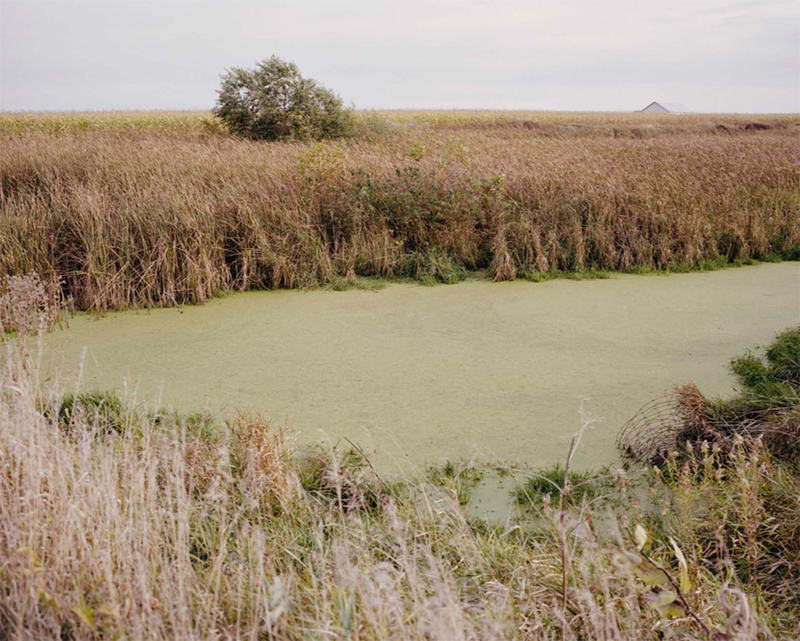
In W.G. Sebald’s Austerlitz, he writes: “we know by instinct that outsize buildings cast the shadow of their own destruction before them, and are designed from the first with an eye to their later existence as ruins.” It’s arguably an optimistic view on the inevitable demise of grand architectural ambitions, but the industrial landscape and the post-industrial city are still physical spaces that organise human activity, so they’re still linked to this issue of power.
In Foucault’s “The Subject and Power”, he writes that what defines “a relationship of power is that it is a mode of action which does not act directly and immediately on others. Instead, it acts upon their actions: an action upon an action, on existing actions or on those which may arise in the present or the future.” I wonder whether your photographs in Blisner, IL don’t imagine a point when the power of this industrial logic has petered out, a possible beginning for some alternate future rather than a pessimistic ending?
It’s an important question, but I can only speculate. What would appear to exist in this town, as pictured in the book, is a broad landscape of disuse. What is left out of the book is representations of the actual current economy of the town: what manufacturing and extractive industries remain, the schools and hospitals (the biggest employers), and of course, every town has a new satellite main street in the big brand stores and Walmarts that are off the immediate exits of the interstate.
I consider what the word ‘industrial’ means, because it means something specific in history (the Industrial Revolution, various points in the industrial history of the midwest (which was nascent, present, then declining)), and now also a ‘type’ of thing in the world, categorically (which the ‘technological’ seems to have replaced as the engine moving commerce and culture forward in the 21st century).
So I don’t think the industrial logic has petered out as much as it has fulfilled it’s own prophecy and transitioned to a kind of late capitalist logic. Or perhaps we are nearing total entropy. Historians of the future might disagree, if history even remains relevant (Vilém Flusser (a huge influence) suggests history has ended in the universe of technical images).
Nonetheless, on the ground and outside theory, in Blisner (which is theoretical!) the economy is in overall distress and the physicality of the ruins of former prosperity is so present and looming (casting shadows as Sebald metaphorizes). The Sebald quote also made me think of the interpretations of the dialectical landscape of Smithson’s “ruins in reverse” (“opposite of the ‘romantic ruin’ because the buildings don’t fall into ruin after they are built but rather rise into ruin before they are built.”). As artists and observers, we’re faced with the confounding problem of assigning historical value to present physical form.
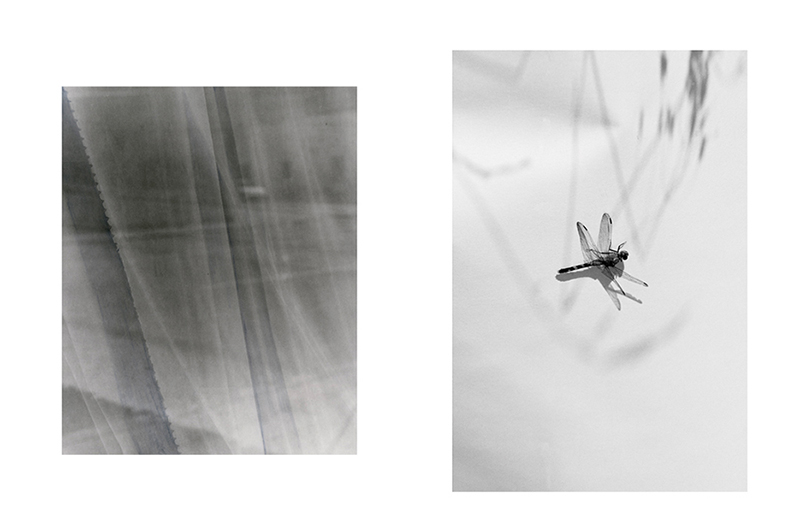
That can become a tricky thing to do when history keeps repeating itself right? If a pattern of entropy in extractive industrial economies is met with a sprawling and homogeneous service and retail economy, the landscape will continue to replicate variations of a common complaint. What interested me in Blisner, IL is the kind of itemising form of the pictures and the book, which becomes something of an alphabet that lacks an organising index. Fragmentation and fracture are a strangely unifying force in the work, but unity is little in evidence.
I’ve said it before, but with this work I’m not wholly interested in a totalising critique of capitalism, in past or present form. I’m also not interested in a nostalgia for ‘the way things used to be made’, because widespread social exploitation and environmental degradation existed then too, often without a consciousness of its immediate intensity or lasting legacy. What I can do is observe what remains as a way to organise (idiosyncratically) and parse the world, map out these patterns of entropy, use and disuse, and understand our present moment with this established context (for me, this serves as an immensely useful critical tool). It’s an alphabet for something that feels beyond the grasps of language, but still with a kind of logic that feels just beyond reach. These objects and environments weren’t built to contain signs for future decoding, but that’s what’s necessary to reverse engineer a narrative that I’m suspicious of.
In conclusion, where do you think you are in this cycle of work relating to coal, and how has the process of following coal transformed your way of making photographs? Obviously lots of things outside of coal influence you, so perhaps you could finish by also talking about some of the other factors influencing changes in your work as well?
Coal opened up a line of inquiry that has translated into a process of inquiry that basically defines how I work at this point. When I was 21, I wanted to initially literalise the abstract (when I turn on the light switch, I’m plugged into this matrix of energy, but it remains abstract. I wanted to photograph to demystify), and what I found was a different kind of abstraction (the drive to mythologize vis-a-vis historical narratives and/or amnesia) that reinvigorated what was unknown to me. Coal happened to be the tangible thing that I was able to anchor into and come back to over and over again. It was perfect for talking about so many things. Coal is the fossil of the natural world. Years later, I’m left with the understanding that you can explore something relatively simple (coal) through complex contexts (culture, labor, history, memorial).
I’m influenced largely by anomalies in the landscape. The holes that exist in well grounded logics (capitalism, for example). Many artists begin in the studio, with nothing, and make ideas that exist beyond the constraints of language into physical realities. I’m deeply moved and engaged with this kind of work, but my own practice begins out in the world. I like Steve Reich and Richard Tuttle as much as Isa Genken or Roni Horn or the Bechers. I’m influenced by landscape, archives, various types of detritus, driving, looking, etc. The most impactful piece of art I saw recently was the new(ish) Lorna Simpson video installations and photographs.

